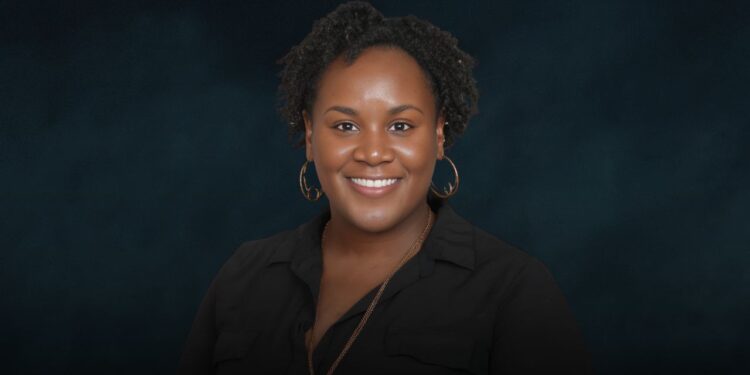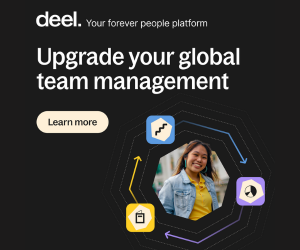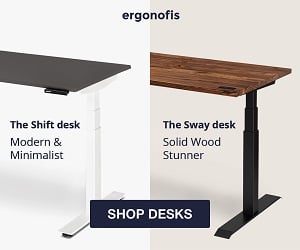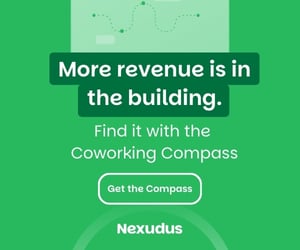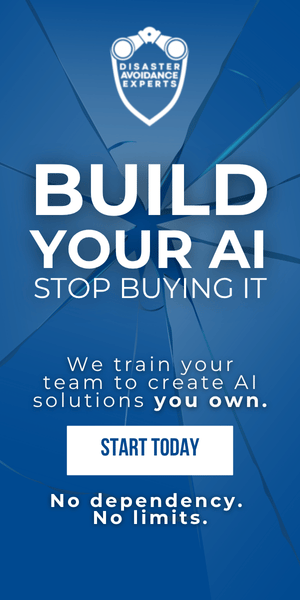About This Episode
In this episode of The Future of Work® Podcast, Anastasia Penright — CEO of Respect My Voice, Amazon DEI expert, and TEDx speaker — shares strategies to build healthier workplace cultures through intentional communication, emotional intelligence, and equity-driven leadership.
Drawing from her experiences at Walt Disney World, Wells Fargo, American Family Insurance, and Amazon Web Services, Anastasia reveals how leaders can transform conflict into collaboration and foster environments that value every voice. Whether you’re managing hybrid teams or rethinking your diversity initiatives, this conversation is packed with actionable insights for creating workplaces that are both drama-free and deeply human.
About Anastasia Penright
Anastasia Penright is a corporate business woman and local community leader living in Houston, TX by way of New Orleans, Louisiana. Her corporate experiences include Talent Acquisition, and Diversity, Equity, & Inclusion (DEI) work from companies such as Wells Fargo, American Family Insurance and Amazon. Stacy has been sharing her voice with the public for over ten years hosting local financial literacy events, diversity sessions, and speaking at themed conferences. She was given an amazing opportunity on February 2020 to speak on the TED stage in Charlotte, NC, with her now viral talk, ‘5 steps to remove yourself from drama at work.’ Stacy is a full-time working mom and enjoys spending time with her husband and 5-year old son watching superhero movies and trying out new restaurants.
What You’ll Learn
- How to reduce drama and conflict in professional settings
- The concept of “work language” and how to adapt your communication style
- Why having a “vent buddy” is vital for emotional support
- How DEI efforts can go beyond checkboxes to real impact
- Tips for engaging underrepresented communities in your hiring strategy
- How to maintain healthy workplace relationships — even remotely.
- Ways leaders can foster psychological safety .
- How to turn tough workplace interactions into teachable moments
Transcript
Jo Meunier [00:01:34 ]: At work hello and welcome to the Allwork.Space Space Future of Work podcast. I’m Joe Mernier and today I’m joined by the wonderful Anastasia Penright, who’s going to talk to us about engaging positively with people and how to navigate through the people we work with to create a harmonious and hopefully drama free workplace for everybody. So welcome, Anastasia, and thanks so much for joining us today.
Anastasia Penright [00:01:58 ]: Oh, thank you so much for having me. I’m super excited about our conversation.
Jo Meunier [00:02:03 ]: Fantastic. Me too. No, I’m thrilled to have you on the show today and I’m going to ask you in a moment to give us a little bit of your backstory. But I know that you’ve built a very meaningful career built around people and making people happier. That’s what it’s all about. And much of your career has been focused on diversity, talent acquisition. You’re currently at Amazon Web Services or AWS, but your career started some years before that. So could you start by telling us a little bit about your backstory and how and why you got to where you are.
Anastasia Penright [00:02:37 ]: Even. I’ll talk about my time, which is my longest stint at Wells Fargo, but I can even kind of back up just even before that and say I worked at Walt Disney World as an intern, which taught me so much about people, because customer service, oh, my goodness, it is top notch at Walt Disney World. And so I interned there. But my first, I would say, grown up job was at Wells Fargo, where I spent 13 years. And I worked the majority of my career in talent acquisition, from recruiting roles to training recruiters, onboarding project recruiting, big focus on diversity, equity, inclusion. And then I moved into strategy work with talent acquisition, which really focuses on a way to bring underrepresented talent into the organization in a very equitable way. So it was luxe and it was great. And I learned so much more through my professional maturity, because in talent acquisition, you’re the face of the company when it comes to a candidate. They’re the person you’re engaged with, and they don’t look at, oh, I had a bad experience with Stacey, I had a bad experience with Wells Fargo, or I have a bad experience with AWS. And so it’s really important for me to make sure that you have to be good at relationships, you have to be great with speaking with people, and then the inside, then you’re working with so many different partners. I mean, you’re managing the people who are going to work for the company, people who are going to work on these teams. So it’s a lot of things you have to navigate. So a lot of that brings some internal politics. It brings just really understanding around dealing with different personalities. And I can say throughout my stint there, I learned so much about myself and how I’m able to interact with people to either gain influence or just gain peace in harmony. After Wells Fargo, I moved to a, it’s a mid sized company in the midwest, american family insurance, which is so great. I wanted to grow with some industry experience. And this was an insurance company, which I knew nothing about insurance thinking I came from a financial services company, but it was very different. Did the same type of work focused on talent acquisition and DEi, again, creating programmatic ways or partnerships in order to bring diverse talent into the organization. And it was really interesting there because as far as the maturity level of where the company was, when it came to Dei, it had a lot to go or a lot more to learn. And so that was a really great experience, a really great experience for me before I landed my current employment right now at AWS and doing very similar focus on underrepresented talent. And I do that through community engagement and external partnerships.
Anastasia Penright [00:05:47 ]: Long story.
Jo Meunier [00:05:48 ]: But about me, that’s amazing. What an incredible career. And to think it all started at Disney, which I have to say, I think a lot of people would be very jealous. Like the dream job, isn’t it?
Anastasia Penright [00:05:59 ]: Oh, my goodness. I love that job. And I’ll tell you, I embroidered the Mickey hats on Main Street, USA at Walt Disney World. Oh, my gosh.
Jo Meunier [00:06:08 ]: You should put that on your cv.
Anastasia Penright [00:06:12 ]: I wish I had pictures that would be like, the first thing you see is me. Like the old school machine embroidering those hats.
Jo Meunier [00:06:19 ]: That’s incredible. I love that. One thing that stood out to me, apart from working at Disney, was that you’ve sort of become a psychologist along the way, haven’t you, by what you said about understanding people’s behavior and sort of really understanding what makes people tick and how to get along with people. It’s sort of very much like psychology in a way. And I should think that’s sort of been the common thread throughout your career.
Anastasia Penright [00:06:45 ]: Oh, 100%. Because a lot of what I do is when I’m dealing with a lot of different personalities, which it happens, we’re people. We all have. You have very strong personalities. You have some people who are a little bit more passive. And then all of it, we need to come together to really get the job done, what needs to happen. And so there are sometimes where I can be, and I’m not a very direct person when it comes to, I do my best to add as much tact and just a little bit of Stacey, which is a little bit more bubbly to how I engage with people. And for Stacey, my work language, that’s usually how I receive it, too, where if you’re letting me know something and you’re kind of not beating around the bush, but in a way where I feel that you hear me, you understand me, and this feedback is to help and support me now, even though that’s my work language, that’s not everyone else’s work language. So if I were to do that to someone who is very direct, they don’t need the pleasantries, they don’t need to know all that they want to know, what do I need to do a, b, and c? What do you need from me or what happened? And so that’s something I had to adjust. It doesn’t mean that I’m not being myself, but in order for me to get the best of this working relationship from the both of us, I need to be able to speak their work language in order to engage. And as I continue that throughout my career, and first, you have to learn it. So you have to listen to people. You have to see, like you mentioned, how they tick, you have to see how they engage in situations. And you make note of that or hear comments of someone saying, man, I have 300 emails not even track. So maybe email is not the best communication for that person. If you need something very important. Right. So listening to those things so you can understand, and you’re basically in your head creating this almost Persona or profile for this person, and then you’re able to engage them in that way. And again, the end game is to get the information you need or to be able to better collaborate on the work.
Jo Meunier [00:08:55 ]: Yeah. And what you were saying just then about working with some people with strong personalities, people under pressure doesn’t always bring out the best side in people. I mean, every workplace in the world has these different characters, and sometimes we rub each other up the wrong way. And I know that you did a fantastic TED talk talking about avoiding conflict in the workplace. So what are some of your sort of tried and tested tips to help people avoid drama at work and to know when to walk away from a situation?
Anastasia Penright [00:09:29 ]: Oh, 100%. So first, thank you for that. The biggest thing is, like when I mentioned with the work language, understanding how people communicate, there’s the smallest things that can be taken out of either context or just a big miscommunication that can turn into this bigger separation that neither party intended and then also kind of causes drama. So I can give an example. And this is just something happened to me. I am the kind of person, when I use my email as a to do list. So I go through my email and I’m like, okay, I got to do this. I’ll put a date. I’ll flag this. That’s just my to do list. But when I’m pinging someone, it’s something where, oh, this is just not like task related. Maybe it’s an FYI or it’s just something I just want you to know. But I don’t want to forget. Well, that’s how I use it. Well, I was sending a ping. So by ping, I mean something you can do, whether it’s slack or teams or whatever software you’re using and the particular recipient. I would do this often, and then I guess one day, this was just the last one, and they had enough, and they were just like, I really don’t want you sending me these pings. I take it as an emergency. You’re asking me to stop what I’m doing to respond to you, and I’m in the middle of something, and your emergency is not my emergency. And they said it that direct. And I was just like, whoa, whoa. It wasn’t an emergency. I was just sending you this. But from that situation, it could have turned into even more, especially from the tone that person had out of frustration, but they took what I was doing as very disrespectful to them, which I had no intend of doing. So miscommunication already turning into something that it didn’t have to turn into. So from the question you asked about some of the things that I’ve tried and done and things before, I would honestly just tell myself, you know what? I’m just not going to interact with that person. Because if you’re going to act like this over something so small, what happens when it becomes something so big? And that’s just not the best way to handle it because I don’t know what that person was going through in the moment. I don’t know what led to that in the moment. And after actually just stopping and just kind of ignoring the tone, ignoring how they approach me, ignoring the fact that that’s not how I prefer to approach people, and so ignoring all that, actually, listen, what is this person saying to me? They’re taking it as, it’s an emergency. They have been responding to me, like, within seconds they’ll respond and I don’t even expect them to. I sometimes don’t even think it’s worth a response, but I had to listen to that. And then I thought, you know what? What can I change? I can’t change their tone. I can’t change their directness, but I can’t change the fact that I was doing something that they were taking a different way. And since the only thing I can control is me, that is something that I felt I can do going forward. It’s not something that changes my core of me, the essence of me. It’s not going to stop me from sleeping at night. Is that something I’m doing or making me feel like I’m less than none of that? And when I took all that off the table, I felt like, I can do this. And what turns out is they apologize to me. They’re like, I’m just sorry. That’s so frustrating. And I don’t think you meant it that way, but people do that and my leadership does that, and it just really gets me off my game and everything like that. Now, had I responded a different way, thinking, whoa, you really were being really upset and very rude to me with this tone that could have led to continued strife between us, which that’s some of the things that I would jot down, like, oh, this is their preference, or this is how that worked in that situation, which became more applicable to other things.
Jo Meunier [00:13:37 ]: Yeah, that’s fantastic. And thinking through it like that, it must be what you mentioned a moment ago about managing stress and thinking about communication. It’s often quite difficult to admit that you’re under stress or you’re feeling a certain way. Do you find that? That with the people that you work with? You said you’ve adapted quite a lot in terms of communicating with other people, working with other people. Other people don’t always see it like that. They just think, oh, I’m just trying to get through my day. Sometimes stress comes out like this. So what are some ways to sort of approach the conversation of stress? How can we speak out about it more easily?
Anastasia Penright [00:14:20 ]: That is a really great question. And that’s something where you have to have your trusted circle, because we have to remember, at the end of the day, it is a workplace, and it doesn’t mean you have to share everything all the time with just anyone. And there are sometimes where if you have your close net in my talk, I describe it as your venting buddy or your person having your circle. Or I had a good friend, she referred to that circle as her tribe, and I had another friend referred to it as your front row. That’s like, if you’re giving the presentation of your life, who is in that front row cheering you on? And those are your people. Right. And so being able to share that with them, being able to share of, like, oh, this is just happening. This is happening. All of this. Now, if there is a root cause of that stress, because I’m a firm believer, like, there are so many things we can’t control in the workplace, there are some deadlines that could come up, especially if you’re dealing with something that’s externally facing or customer or client facing, and you want to make sure that you help with their needs and things like that, that can bring a lot of challenges, which in itself can bring stress to work. And how we treat one another is something 100% in our control. Like, that’s something we can totally do. So if we’re getting to the point where the root cause of a stress can be to an individual, then it would be time, of course, get with your tribe or your event buddy or your top row to really talk it through. But it’s really time to then have a conversation about the root of that, especially if you have to continue to work with that person. Now, if you never have to see that person again, you’re never going to work with them again. There are some things where you talked about when it’s time to walk away. That is definitely me. There’s actually no more engagement I would need. And I’ve done everything in my power to really try to make it easier to work with the individual. And they’re just simply because you can’t control that. They simply are not trying to meet you in the middle or they’re not even trying to hear you. Let’s just walk away. But if there is someone you have to continue to work with or you’re genuinely interested in making this relationship work, it is time for you to have that conversation with that person to get a clear understanding. And instead of speaking through the stress of everything that is wrong, you speak through more of the empathetic side. Like, I know we have a lot going on with the company. I know we have this. I can understand it, too. So I just want to make sure that for me, if there’s anything that I can do and just hear the person out, and that is how you can start that conversation. But if it’s a plethora, again, stick with your vent or your tribe.
Jo Meunier [00:17:14 ]: I love the idea of having a vent buddy and like a front row cheerleader squad. That’d be great, right? I should think that would be a lot easier in sort of an in office situation. But I should imagine things have changed a lot since COVID and since companies became more remote and you work in a very large distributed company, as an example, Allwork.Space. We’re distributed as well. We have people all in different countries, and I think it changes the relationships we have with people. There may be less of a front row. Perhaps you don’t know your event buddy as well as you might if you were face to face all the time. So I think. I should think going remote really changed communication in a lot of ways. Is it still possible to build those strong relationships even when we’re potentially thousands of miles apart?
Anastasia Penright [00:18:10 ]: For me, I’m going to say 100% actually, my vent buddies. One is not even in the same country with me and the other is across the country here in the US. And it comes from different ways. We text a lot, we speak a lot, we work close enough. Not maybe directly on the same team as often, but close enough where they know all the characters in my story or they know all the situations that can happen. And the way we cultivate that relationship, despite the distance, is that we’ll do things where and we’re working with families and things like that in different time zones. So we try to respect that as much. But we may do simple Facetimes or WhatsApp, and we send a message, I may send one really early, and then they respond to it late that evening or the next day, their time, and then understanding those gaps. But we stay abreast of what’s going on in each other’s lives, the big things and little things. So then when we have to kind of pull up together, we already have what’s been kind of going on, the foundation, and then we’re now talking about the situation, and so we don’t have to go through what else is happening. We’re like attacking it together.
Jo Meunier [00:19:26 ]: Yeah, I love that. That’s amazing. So if there’s one thing we take away from this conversation, it’s get yourself a vent buddy.
Anastasia Penright [00:19:35 ]: Yes. And keep note that your vent buddy is not just there to listen to you vent. They’re also after that because you got to get it out. Just yell, do what you got to do. But then after I’m like, okay, what can we do? What are our options? Because you don’t want to find yourself in a repeat situation.
Jo Meunier [00:19:53 ]: Absolutely. A big part of your career is diversity, equity, and inclusion. So I’d love to know more about that and how you’re working to change attitudes and processes in your current organization and Wells Fargo and in your career to now.
Anastasia Penright [00:20:12 ]: Absolutely. Well, some of the things that we notice in some of our underserved communities is that the biggest piece that we need to really try to tackle is providing awareness of a lot of the opportunities we have. Like speaking of AWS. AWS offers so many types of training, certifications, programs, things that we do, and much of it is available right online, easy to touch for people to do. And it’s just a lot of these communities that don’t get that special touch as often just simply don’t know about. And that’s a piece like getting there, showing and being a part of that community through our volunteerism, getting out there to teach about some of our programs, providing awareness of not just our jobs, but those technical trainings. And so that’s been the biggest thing with AWS. We just want to make sure that we’re leaving a place way better than where we found it. And one of the first things that you can do to really help that is through the workforce, getting access to people to have employment, or whether it’s full time employment, just gainful employment. So once you help that, the economy starts to really help itself together. So being able to provide that and my time at Wells Fargo, very similar. There were a lot of programs, and even if we didn’t offer it, we would be able to share all of these resources. Now at AWS, we have quite a few that we’re able to do on our own, in house to share. But. But that’s what it’s about. Like whether if we are the ones supplying it or we’re utilizing someone else, being able to look at gaps in these underserved communities and what can we do? Is it the training piece, is it for you to actually know how to apply to the jobs? Is it once you apply to the jobs, the technical interviewing piece, those are things where some universities, where people have the opportunity to go there, they learn that it’s a part of the curriculum. They know, hey, if you apply to this job, you’re going to take this assessment and you need to know x, y and z in order to do it. Some schools don’t offer that, or some schools have where especially our four year universities, where many people who have the opportunity to attend those, they just financially unable to do that. And they may go to a two year, but their experience of the work that they’ve done is very equitable to the four year degree and they just need the opportunity. So we just need to meet them where they are. So that way we can help provide those or fill in that gap maybe with the training program, so that way we can get them there. So that’s a lot of the work that I do within talent acquisition, but there’s so much more in the DEI space, I’m very happy to say, within AWS, from our global teams that are focused on, from an internal lens, from our environmental team that is focused on that, from just sustainability and things like that. So much the company is doing in my little small, little chunk within talent acquisition, it pulls a big punch, but it’s just one of a lot of levers that we do within the company.
Jo Meunier [00:23:36 ]: That’s fantastic. And all the cogs work together to make a positive change.
Anastasia Penright [00:23:4 ]: Yeah, exactly.
Jo Meunier [00:23:43 ]: And for companies that are working to be supportive of different groups of individuals, what is some of your advice to them? How can they start to make a positive difference in their organizations?
Anastasia Penright [00:23:55 ]: Oh, great. One of the easier ways is to first start with volunteering into these communities. That’s how you learn, that’s how you understand what’s the need. The second piece is to utilize some of the great research that they have out there from some of these third party research companies, Gardner Catalyst, things like that, where you can kind of understand some of the needs in different pocket diverse areas. And that’s helped you start building out a strategy to lead into that. And then internally, one of the biggest focuses, we try to do really great with training our teams to understand why this is important, to understand what a diverse team does, not to make it about the business, but the bottom line, how you get different perspectives, how you’re able to really build a strong strategy with all of these diverse perspectives, which goes past ethnicity and gender, goes into work experience, just different living in different areas. And I’m now at a company where I work with people who’ve worked and lived in so many different countries. And I’m just like, I never did that before. And it’s just so fascinating to me. They’re just not a big deal for them. And so they have these unique perspectives and those are the type of things that are so important. So internally, when we train our teams of why this is important, why we would want to do this work, we gain buy in and they organically want to do it as well. So it’s not a tick box or something we’re just doing. It’s something that we’re truly passionate about it, even from inside.
Jo Meunier [00:25:39 ]: Fantastic. Well, we are reaching near the end of our podcast, so obviously go and seek and watch the Ted talk. I very much advise our listeners to go and do that. And before we go, if people want to learn more about the diversity, equity and inclusion, if they want to find out more about communication in the workplace, how to avoid conflict, all this good stuff, is there a way they can reach out to you and get in touch or do you have resources that you can point our listeners towards?
Anastasia Penright [00:26:13 ]: Absolutely. So one first place, LinkedIn. Definitely open. I do my best responding on chats and things like that because I like to stay very active there. Second, I do have my website, respect my voice. I have a nonprofit, and I really focus on the communication piece from just relationships, whether it’s work or even personal organizations that you may be involved with outside of work. And then when it comes to a lot of the DEI space, I’m going to revert back to some of the AWS resources overall. And then also so that can be just like simply going to amazonwebservices.com and then you can even do the search for our DeI practices. And I’m happy to answer any questions about that specifically on LinkedIn as well, to really guide any companies that are looking to just get a jump start and just need the. What’s the first thing I do? Happy to help there.
Jo Meunier [00:27:06 ]: Yeah. Fantastic. And I think a lot of our listeners might be in that boat where they’re thinking, how do I get started? Where do I go from here? How can I lay the right blocks for the future?
Anastasia Penright [00:27:16 ]: Absolutely.
Jo Meunier [00:27:18 ]: Wonderful. Well, thanks so much, Anastasia. I’ve really enjoyed our conversation, and we hope to have you back on the podcast again one day soon.
Anastasia Penright [00:27:25 ]: Oh, awesome. It is my pleasure. Thank you so much for inviting me.
Jo Meunier [00:27:30 ]: Thank you very much. Take care.
Anastasia Penright [00:27:33 ]: Bye bye.


 Dr. Gleb Tsipursky – The Office Whisperer
Dr. Gleb Tsipursky – The Office Whisperer Nirit Cohen – WorkFutures
Nirit Cohen – WorkFutures Angela Howard – Culture Expert
Angela Howard – Culture Expert Drew Jones – Design & Innovation
Drew Jones – Design & Innovation Jonathan Price – CRE & Flex Expert
Jonathan Price – CRE & Flex Expert
